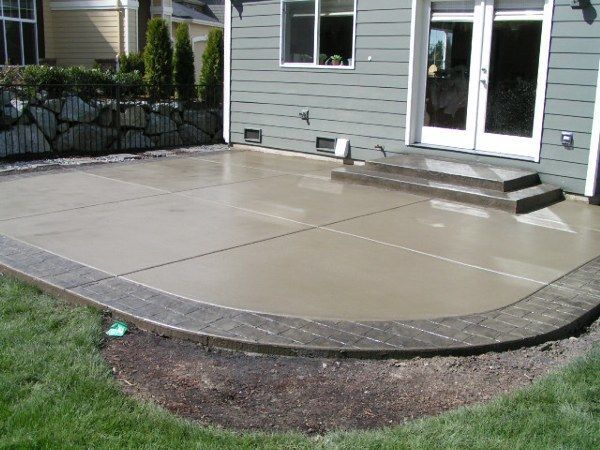To repair cracks in your concrete driveway, start by identifying the type of crack. Hairline cracks are thin and less serious, while wider cracks might indicate structural issues. Gather tools like a crack chaser, wire brush, concrete patch, gloves, and safety gear. Clean and widen the crack to make sure proper adhesion. Fill the crack with a suitable repair compound, making certain it reaches all crevices, and smooth the surface. Allow the patch to cure fully, then seal the driveway with a high-quality sealer to protect it. Follow these steps, and you’ll have a durable fix that lasts. Want more detailed instructions? Keep going.
Identifying Crack Types
Identifying crack types in your concrete driveway is essential for determining the appropriate repair method.
First, let’s talk about hairline cracks. These are very thin, often just a fraction of an inch wide. They’re usually caused by minor shrinkage as the concrete cures. While they don’t pose an immediate threat, addressing them promptly can prevent water infiltration and further deterioration. You’ll typically find hairline cracks running randomly across the surface, and they often require less intensive repair methods.
On the other hand, structural damage is more severe and demands urgent attention. These cracks are usually wider and may indicate underlying issues, such as soil movement or improper installation. Structural cracks often run deeper, reaching the core of the driveway, and can lead to significant problems if left unchecked. You might notice these cracks spreading quickly, becoming uneven, or even causing sections of the driveway to lift or sink. In such cases, it is essential to contact a reputable concrete driveway company Cincinnati, OH, to assess and repair the damage efficiently.

Gathering Necessary Tools
Before you start repairing cracks in your concrete driveway, make sure you gather all the necessary tools and materials. Proper tool selection and the right safety gear will make the job easier and more effective.
First, you’ll need to focus on tool selection. Here’s a quick list of essential tools and materials:
- Crack Chaser or Cold Chisel and Hammer: To widen the crack slightly and make certain it’s clean.
- Wire Brush or Air Blower: For removing loose debris and dust from the crack.
- Concrete Patch or Epoxy Resin: Depending on the size and type of crack.
Safety should be your top priority. Make sure you have appropriate safety gear, such as:
- Safety Glasses: To protect your eyes from dust and debris.
- Gloves: To shield your hands from sharp edges and harsh chemicals.
- Dust Mask: To avoid inhaling concrete dust and other particles.
Having these tools and materials ready before you start will save you time and ensure you’re well-prepared for the task ahead.
Preparing the Cracked Area
Occasionally, you’ll need to thoroughly clean the cracked area to make sure the repair material adheres properly. Start by removing any loose debris from the crack. Use a stiff brush or a wire brush to scrub away dirt, small stones, and any other loose particles. It’s important to get rid of this debris, as even small particles can prevent the repair material from bonding well with the concrete.
Next, you should use a pressure washer to clean the area more deeply. The high-pressure water will eliminate any remaining dirt and grime embedded in the crack and the surrounding surface. If you don’t have a pressure washer, a garden hose with a high-pressure nozzle can work as an alternative. After washing, let the area dry completely before proceeding to the next step.
For proper surface preparation, you might need a chisel and hammer to widen the base of the crack slightly. This helps to create a more stable area for the repair material to adhere to. A clean, well-prepared surface is essential for a long-lasting repair.
Once you’ve completed these steps, your cracked driveway will be ready for the application of repair materials.
Applying Repair Materials
Once the area is prepared, you’ll start by mixing the concrete repair material according to the manufacturer’s instructions. Choosing the right materials is essential for a long-lasting repair. You can find specific compounds designed for different crack sizes and weather conditions, so make sure to select one suitable for your driveway’s needs.
First, follow these steps for a successful application:
- Mix the compound: Pour the repair material into a clean bucket. Add water gradually, stirring continuously to get the desired consistency. The mixture shouldn’t be too runny or too thick.
- Fill the crack: Use a trowel or putty knife to apply the mixed compound into the crack. Press firmly to guarantee the material gets into all the crevices and voids.
- Smooth the surface: Once the crack is filled, smooth the surface with the trowel to make it level with the surrounding concrete.
Finishing and Sealing
After filling the cracks, let the repair material cure completely before proceeding to the sealing process. This step is essential for guaranteeing a durable and long-lasting repair.
Once the material has cured, you’ll need to focus on surface smoothening. Use a concrete grinder or a hand trowel to even out the repaired areas, making them flush with the rest of your driveway. This not only enhances the appearance but also prevents any uneven surfaces that could lead to further damage.
Next, clean the entire driveway to remove any dust, debris, or loose particles. A clean surface ensures the protective coating adheres properly.
Once clean, apply a high-quality concrete sealer to the entire driveway. This protective coating will safeguard your driveway against moisture, chemicals, and general wear and tear. For best results, use a roller or sprayer to apply the sealer evenly, ensuring full coverage.
Allow the sealer to dry according to the manufacturer’s instructions before using the driveway. This final step not only enhances the appearance of your concrete driveway but also extends its lifespan, keeping it in top condition for years to come.